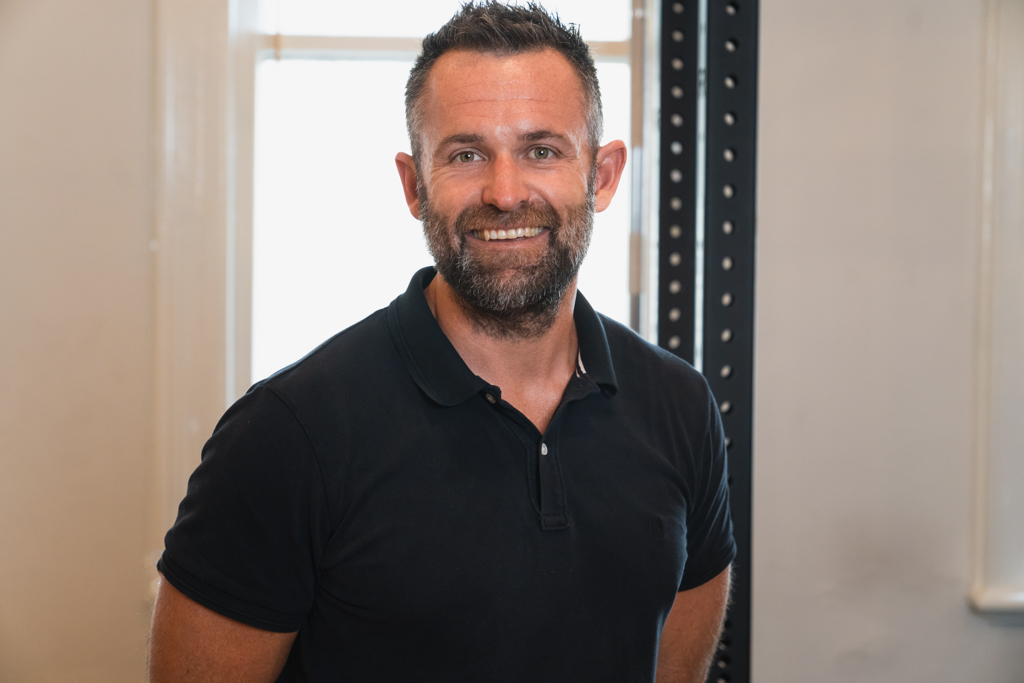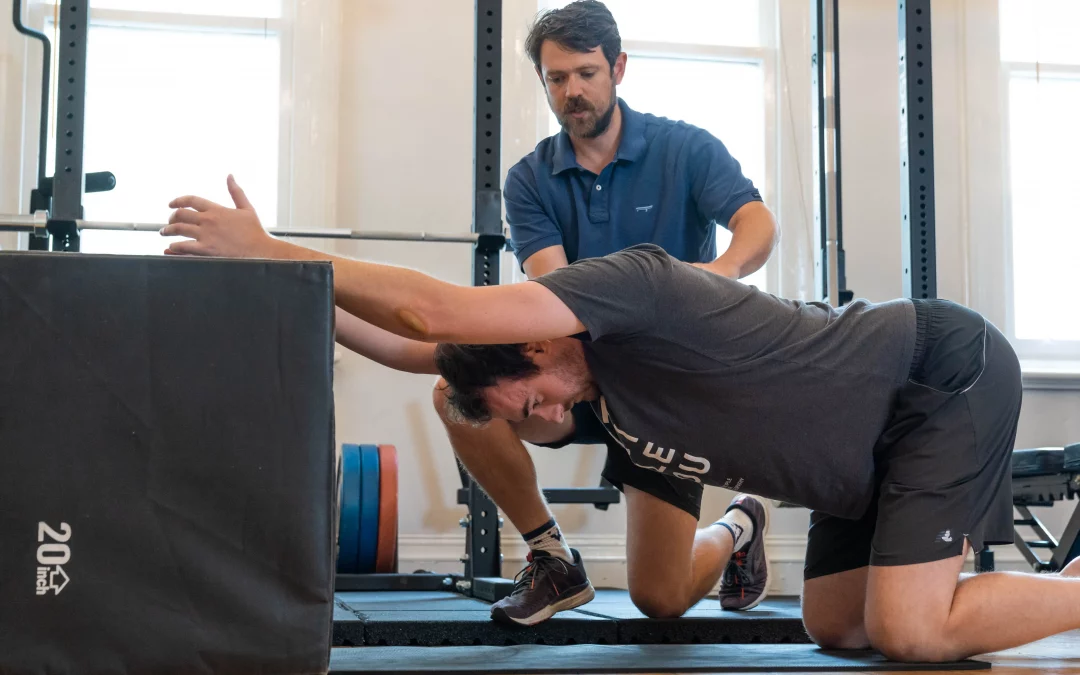Movement strategies for the office worker
For the every day office worker who sits for 90% of their working week, this can equate to somewhere between 35-45 hours per week. This is quite a concerning number of hours spent being in a static working posture and when you consider that outside of work, we are also probably sitting somewhere between an extra 4-8 hours per day (28 – 56 hours per week), plus sleeping 6-8 hours per night (42 – 56 hours per week), it is quite confronting to think how sedentary some of us can be. There is a growing body of evidence to suggest that sedentary hours can have a massive impact on ones immediate and future health and wellbeing. We have all read the article “sitting is the new smoking” and whilst i agree that sitting can be an issue, I would definitely not equate it to smoking. Some sitting is good for us all, like anything. Whereas I can whole heartedly say that I believe that any amount of cigarette smoking cannot be good for you.
In a world where we are more organised than every before, yet more time poor than ever before, many of the clients that we work with on a daily basis are often say they simply dont have time to fit 30-60 minutes of exercise into their daily regime. So rather than nit pick through the details of why they cannot move more, I thought I would focus on offering up some snack bite practical ways to sneak movement into the day.
So where do we start?
Let start with 2-3 minutes every 30 minutes. If we do 2 minutes of movement every 30 minutes over a 7.5 hour work day, we are probably fitting in 30 – 45 minutes of movement a day.
Hopefully we can all try and fit 3 lots of 10 minute walks into our day also to get ourselves an additional 30 minutes of walking. As we all know we need to hit that magical 10 000 steps somehow.
Thigh stretch
Recommendations
- Aim to perform 2 sets of 30 seconds on each leg.
- Hold the chair or place your hand on the wall for support
Objective
- Stretch the anterior thigh (quadricep) muscle
Hip flexor stretch
Recommendations:
- Place your knee of the chair and slide it back slightly
- Consider holding the desk or placing your hands on the wall if you need further support.
Objective:
- Stretch out the anterior thigh (hip flexor) muscle
- Improve hip extension
Spine mobiliser
Recommendations:
- Perform 5-10 movements in each direction
- Work a range that is comfortable
Objective:
- Take your spine through various ranges of motion to reduce tension in the body
Back stretch
Recommendation:
- Aim to perform 5 – 10 back stretches
- Hold the chair and work a range of motion that is comfortable
Objective
- Stretch out the back
Calf mobiliser
Recommendations:
- Aim to do 15-20 repetitions or perform this for 60 seconds
- Start gently and work a range that is comfortable
Objective:
- Mobilise your calf muscles
Adductor mobiliser
Recommendation:
- Perform 5-10 repetitions or perform for 30-60 seconds
- Work a range that is comfortable
- Consider placing your hands on the wall for support
Objective
- Mobilise the adductors i.e. groin muscles
Posterior hip stretch
Recommendation:
- Work a range of motion that is comfortable
- Do not push into pain
Objective
- Stretch the posterior hip muscles
Neck stretch
Recommendation:
- Aim to perform 3-5 repetitions each side
- Hold 15-30 seconds each side
Objective:
- Stretch the muscle attaching from the neck to trunk and shoulder girdle
Shoulder stretch
Recommendation:
- Perform 2-3 stretches for each side
- Hold 15-30 seconds
- Work a range that is comfortable
Objective
- Stretch the muscles that attach around the shoulder girdle
Shoulder rolls
Recommendation:
- Perform 15-20 rolls in each direction
Objective:
- Mobilise the muscles around the shoulder girdle
Neck mobiliser
Recommendations:
- Move the neck in each direction 5-10 times
- Move in a slow and controlled manner
- Do not push into pain
Objectives
- Mobilise the neck
Wrist and hand mobility
Recommendation:
- Perform each movement for 5-10 times
- Do not push into pain
Objectives
- Mobilise the hand, wrist and forearm muscles
Standing spine mobility
Recommendation:
- Perform 3-5 movements in each direction
- Work a range that is comfortable
Objective
- Mobilise the spine
Keep things simple
Start by picking 2 to 3 of these exercises and perform once every 30 minutes. This will help you get up and move away from the desk and break your sitting posture. Try and pick an upper body and lower body movement so that you can stand up away from the chair. Make sure you perform the stretches or mobility exercises in a slow and controlled manner. Do not push into pain.
FAQs About Osteopathy At Principle Four Osteopathy
How does osteopathy work?
Osteopathy works by treating the body of any misalignments, weaknesses and imbalances in the musculoskeletal system. Osteopathy treatment is applied on muscles, joints and connective tissue to improve posture, movement, and increase blood flow and aid in lymphatic drainage.
Osteopathy takes a holistic approach to treating your body and causes of pain. It not only focuses on your spine, but all the other areas of your body and how each body part affects one another. This is why osteopathy involves (or requires) a variety of different rehabilitation methods and techniques, including manual therapy, clinical exercise programs, ergonomic assessments, and more. It’s extremely important to meet an osteopath therapist who can take the time to thoroughly assess your issues and concerns, and provide you with a personalised treatment plan that provides the best results for your wellbeing.
At Principle Four Osteopathy in Melbourne CBD, we offer longer consultations than other osteotherapists because we understand that no two people are the same; even if they present the same pain symptoms or discomforts. With our treatment sessions, we assure that you’ll receive highly personalised osteo treatments that work by reducing pain, increasing movement, and creating a better quality of life in the long term.
What conditions can osteopathy treat?
At Principle Four Osteopathy, we provide osteopathy treatments for all areas of the body, and will often involve a comprehensive and holistic treatment program targeting multiple areas of your body for optimal health. Some of the most common areas of the body that our clients come in to see us about include the back, neck, shoulder, hip, knee, migraines and headaches, but osteopaths able to assess and treat most conditions in just about any area of the body.
What techniques do osteopaths use?
Your osteopath will select the most appropriate and effective treatment techniques for your particular pain, injury or condition. Some of the techniques commonly used during an osteopathic consultation may include:
- Soft tissue massage – this may involve direct or indirect treatment of the tight or tender soft tissues. Direct soft tissue massage may involve working into the muscle to relax the tissues, whereas indirect soft tissue technique may involve moving away from the tight/tender spot to help reduce tension and pain. Some of the osteopaths at Principle Four Osteopathy may also apply instrument assisted soft tissue massage (similar to FAKTRor Graston Technique).
- Joint articulation and mobilisation – this involves moving joints through its anatomical range of movement. Sometimes following an injury a joint can become stiff and restricted and gentle joint articulation and mobilisation can help improve their mobility.
- Joint manipulation – high velocity low amplitude techniques are typically commonly known as “joint cracking” “joint cavitation” “popping” the joint.
- Stretching – which can include static, PNF, dynamic application) of the muscles. Practitioners might assist with the stretching or prescribe stretching for the client.
- Taping – such as rigid stability taping or dynamic taping (kinesiotaping, rock taping) to help with support and proprioceptive awareness.
- Dry Needling – in recent times more and more manual therapists (osteopaths, physiotherapists, chiropractors & myotherapists) are training in dry needling techniques. This technique is often used for the treatment of trigger points.
- Exercise Prescription – movement based rehabilitation. More and more osteopaths are now educating and prescribing exercise as part of the treatment and management of their client’s injuries or conditions. This may involve the prescription of movements, strength, endurance, flexibility or balance exercises.
- Ergonomic / Manual Handling Risk Assessment and Training – reviewing and educating on best practice ergonomics and manual handling is another common treatment and management approach by the Osteopath.
Osteopath vs Physiotherapist vs Chiropractor: what is the difference?
Most people think a physiotherapist prescribes exercises, a chiropractor cracks spines and joints, and an osteopath sort of does both. It’s important to note that ‘Osteo’, ‘Physio’ & ‘Chiro’ are professions – They’re not treatments or treatment styles. Each profession is qualified to diagnose, manage and prevent musculoskeletal conditions.
If you are trying to decide between an Osteopath, Physiotherapist or Chiropractor the real difference comes from a great practitioner, not a profession. The best practitioners get you moving and feeling better so you can get back to enjoying the things you love. That is exactly what our osteopaths aim to do with each treatment. Help you move better and feel good so you can enjoy life.
How much does an osteopath cost?
We have long consultation times which allow us to hear your story and tailor treatments specific to you and your condition. Private health claiming is available for all osteopathy consults. Please consult your private health fund provider to determine your osteopathy rebate.
$120 – 140 INITIAL consultation | 60min | For clients who have not visited Principle Four Osteopathy before or if you have not been to the clinic for an osteopathy consultation for some time.
$95 STANDARD consultation | 30-40min | For clients with one regional complaint and/or simple musculoskeletal complaint or if you are receiving regular treatment as part of your treatment plan.
$120 LONG consultation | 60min | For clients who want more time to address one or more regional musculoskeletal complaints and/or complex musculoskeletal conditions.
About The Author
Heath Williams

Heath graduated from Victoria University in 2003 with a bachelor clinical science and master’s in health science (osteopathy). Since then he has had a varied work career in the health sector.
He lectured at the British School Osteopathy, London School Osteopathy, Victoria University and Southern Cross University within the osteopathy departments. Teaching roles have included 9 years teaching exercise rehabilitation, 8 years ergonomics and 16 years clinical education.
In addition to this Heath also teaches post graduate training to health professionals in office and vehicle ergonomics, manual handling training and strength and conditioning.
Heath has worked extensively in the occupational health and safety industry, firstly with Health Response UK in London and now with Corporate Work Health Australia.

